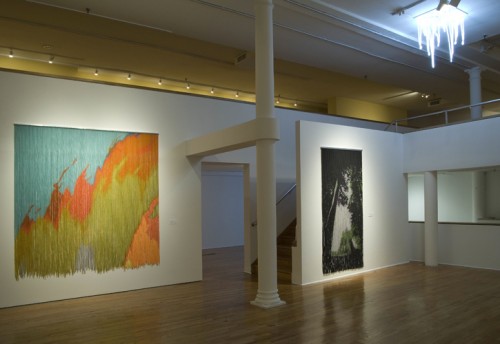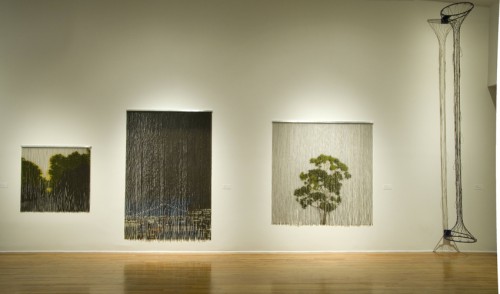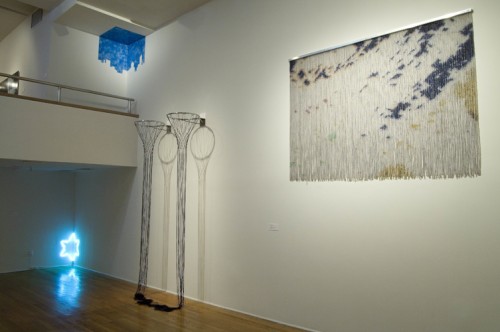
"Kori Newkirk: 1997-2007" (installation view), 2007. Photo: Adam Reich. Courtesy The Studio Museum in Harlem.
“No one can make a better Kori Newkirk about Kori Newkirk than Kori Newkirk.”(Kori Newkirk: 1997-2007. Los Angeles: Fellows of Contemporary Art, 2007, 29)
The Visiting Artists Program at The School of the Art Institute of Chicago (VAP) is especially excited to welcome back Kori Newkirk, who earned his BFA at The School of the Art Institute of Chicago. As part of an ongoing, semi-annual “Distinguished Alumni Lecture Series,” VAP always looks forward to inviting notable alumni to return to SAIC, giving them a chance to reflect on their time here and also to share what they’ve been up to since.
For more then a decade Newkirk has participated in dozens of solo and group exhibitions, including the 2006 Whitney Biennial, but early in his career, back in 2001, he was part of the now legendary Freestyle show at the Studio Museum in Harlem. Curated by Thelma Golden, it famously injected the term “post-Black” into contemporary art discourse.
In many ways, Newkirk’s work problematizes the identity politics of the 90s and refracts issues of race, gender, and sexuality through the prism of autobiography and self-portraiture. At the same time, Newkirk’s work also draws heavily from the visual vocabulary of Conceptual Art and Minimalism. His cross-disciplinary art practice encompasses everything from photography, video, assemblage, site-specific installation, neon sculpture and mixed-media painting, and as Newkirk puts it, “I’ve always considered myself a non-painting painter who sometimes makes paintings, but with absolutely no paint.”

"Kori Newkirk: 1997-2007" (installation view), 2007. Photo: Adam Reich. Courtesy The Studio Museum in Harlem.
I find Newkirk to be extremely sensitive to the material quality of the media he employs, even going so far as to let it guide the works creation and help define its presence. In his signature beaded curtain pieces, which I still clearly remember seeing for the first time at the now defunct Bodybuilder & Sportsman Gallery in Chicago, Newkirk depicts bucolic natural landscapes using cheap, urban materials such as pony beads strung from hair extensions. This allows him to elegantly merge the materiality of sculpture with the imagery of landscape painting.
Newkirk’s work probes tropes of both black and white. He’s made an ongoing series of site-specific installations by smearing handfuls of pomade on gallery walls rendering images of police helicopters and Cadillacs, and in a different series, he’s used basketballs, hoops and nets, such as the pictured Untitled from 2004, which he describes as:
“…the never-ending game. You score some points– the ball travels through the net and comes out the other end, so you’ve lost what you gained. You can never really win.” (Kori Newkirk: 1997-2007, 22)

"Kori Newkirk: 1997-2007" (installation view), 2007. Photo: Adam Reich. Courtesy The Studio Museum in Harlem.
The usage of great white sharks, snowflakes, and icicles in his art are also nuanced reflections on not just race, but also issues of danger, power, and Newkirk’s intimate personal memories. The alien quality of these things and the often temporal way he renders them has a certain magnetism for Newkirk, and indeed, sharks themselves serve as a talisman for him and his art practice when he states:
“I don’t think I ever want to land. I think I just need to keep moving. It goes back to the sharks again: when they stop swimming, they sink and die. That’s how I see myself.” (Kori Newkirk: 1997-2007, 38-39)
It’ll be our pleasure to host Newkirk for his upcoming lecture and of course, we’d love to have you join us! If you can’t make it, check back with VAP as we’re continuously posting podcasts of our lectures as they become available.



